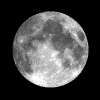

ALWAYS use the videos if you missed a class AND for Exam reviews
Be able to define:
celestial sphere
magnitude
rotation
revolution
ecliptic
zodiac
tilt of the Earth
seasons
spring equinox
summer solstice
autumn equinox
winter solstice
astrology
causes of eclipses
total solar eclipse
partial solar eclipse
annular solar eclipse
lunar eclipse
terminator
umbra
penumbra
line of nodes
precession
node
Aristotle
parallax
Ptolemy
Ptolemaic Theory = Geocentric Theory
retrograde motion
Be able to:
- describe the concept of the celestial sphere and the conventions of angular
measurement that enable us to locate objects in the sky.
- account for the apparent motions of the Sun, Moon, and stars in terms of the actual motions of Earth and the Moon.
- show how the relative motions of Earth, the Sun, and the Moon lead to eclipses.
- explain the causes of the seasons.
- using New/First quarter/full, be able to FIGURE rising, setting, and highest in the sky times for these phases.
- explain all the circumstances for a lunar eclipse
- explain all the circumstances for a solar eclipse
- explain all the circumstances for an annular eclipse
- explain the difference you would see when in an umbral shadow as compared to a penumbral shadow for a lunar eclipse
- explain the significance of the rotation and revolution of the Earth
Be able to list:
- the date marking the first day of each season
- the Sun's location at noon on each of those dates
- the phases of the Moon
Be able to define:
Copernicus
Tycho Brahe
Kepler
ellipses
Kepler‚€™s First Law
Kepler‚€™s Second Law
Kepler‚€™s Third Law
astronomical unit
Galileo
Newton
Newton‚€™s First Law
Newton‚€™s Second Law
Newtons Third Law
Orbits
Newton‚€™s Law of Universal Gravitation
Be able to:
- explain how the observed motions of the planets led to our modern explanations of planetary motions.
- explain view of a Sun-centered solar system.
- outline the major contributions of Galileo and Kepler to the development of our understanding of the solar system.
- state Kepler‚€™s First Law and explain an example of its use in the solar system
- state Kepler‚€™s Second Law and explain an example of its use in the solar system
- state Kepler‚€™s Third Law and explain an example of its use in the solar system
- state Newton's First Law of Motion and explain an example of its use
- state Newton's Second Law of Motion and explain an example of its use
- state Newton's Third Law of Motion and explain an example of its use
- explain why astronauts just 150 miles above the Earth are falling without hitting the Earth. (What is an orbit?)
- state Newton's Universal Law of Gravitation and explain an example of its use
- explain how the latter permits us to measure the masses of astronomical bodies
- explain the causes of tides, be able to predict the timing of times, and how the Moon's phases change tides
TEST 1 COVERS MATERIAL UP TO THIS POINT.